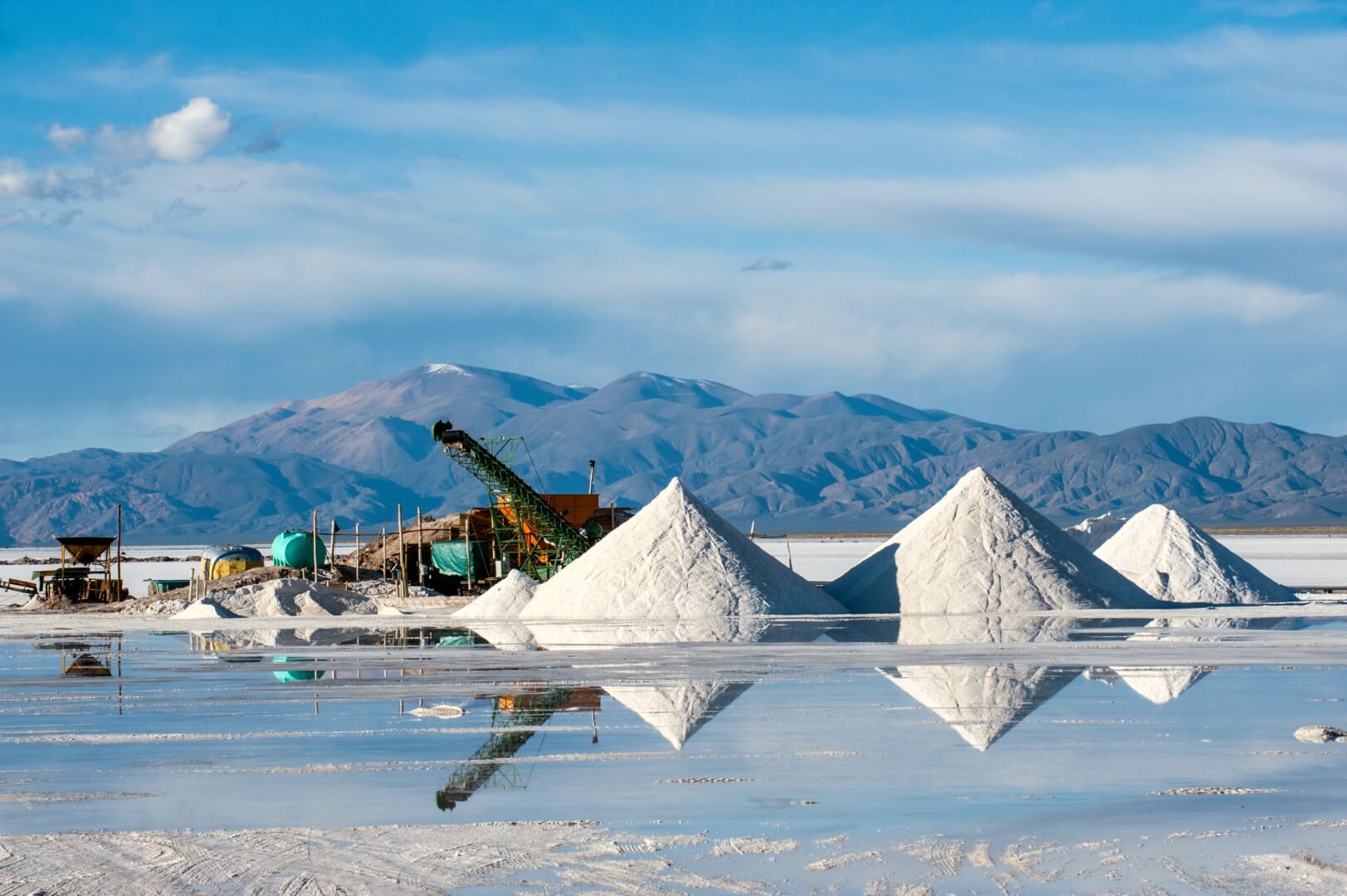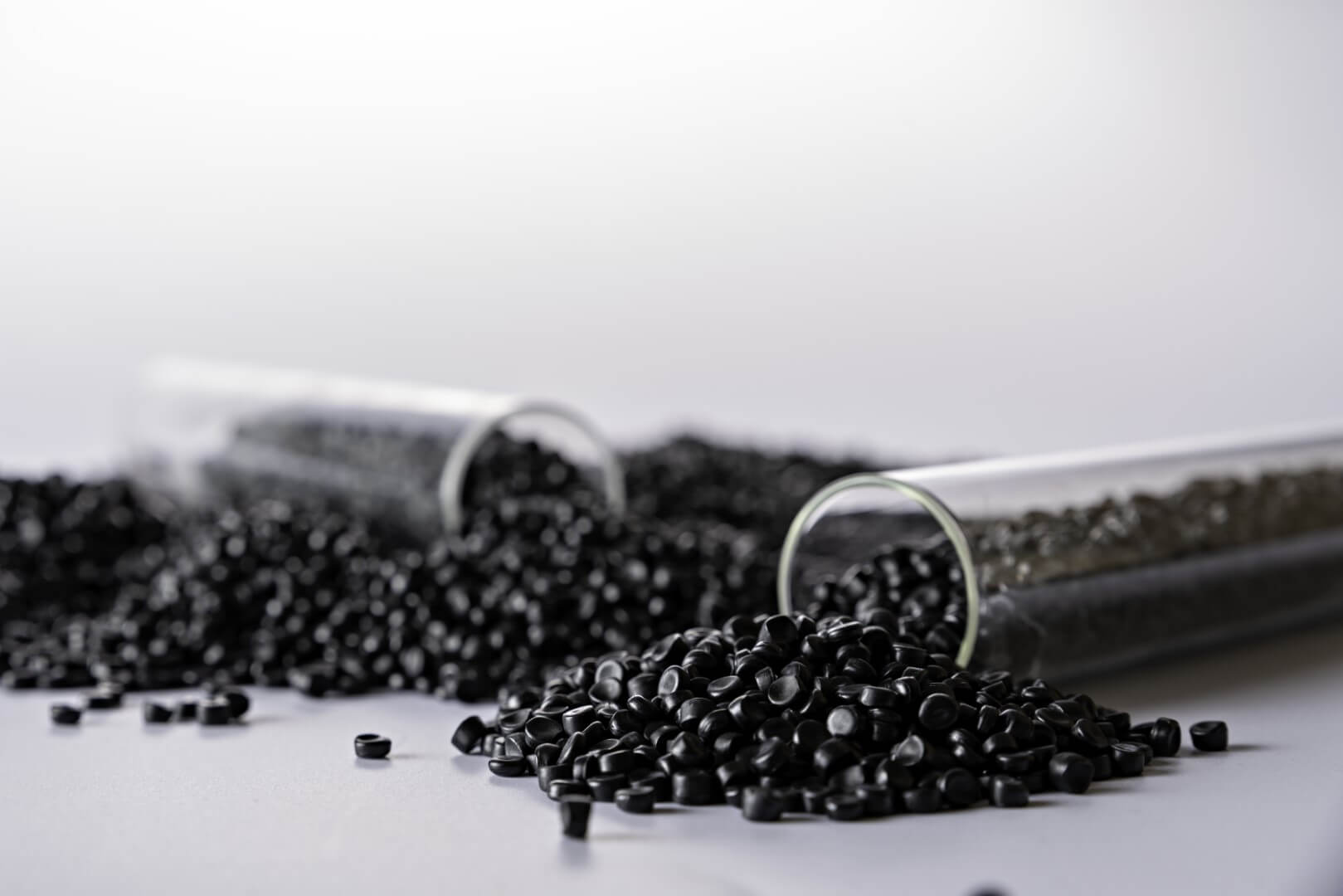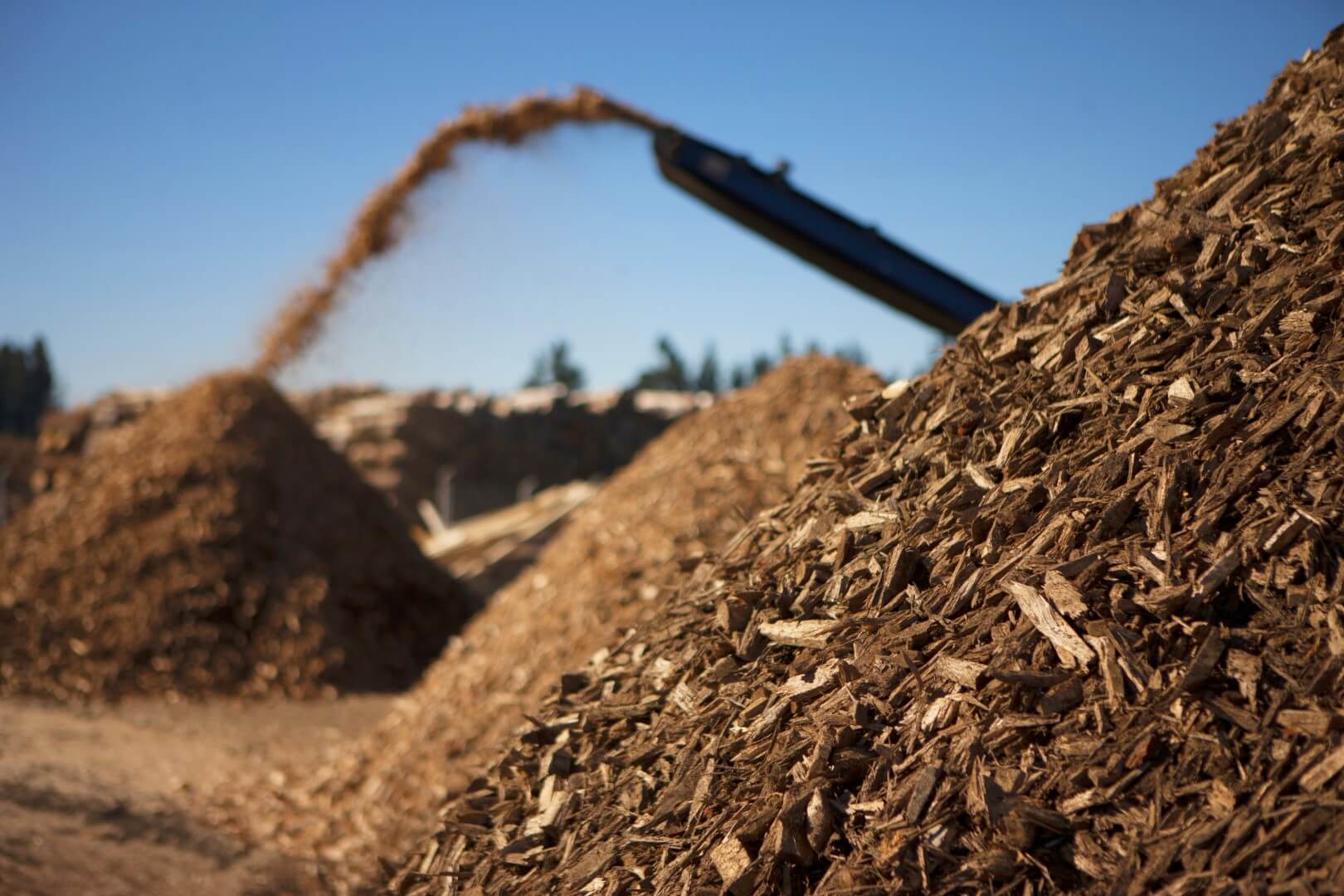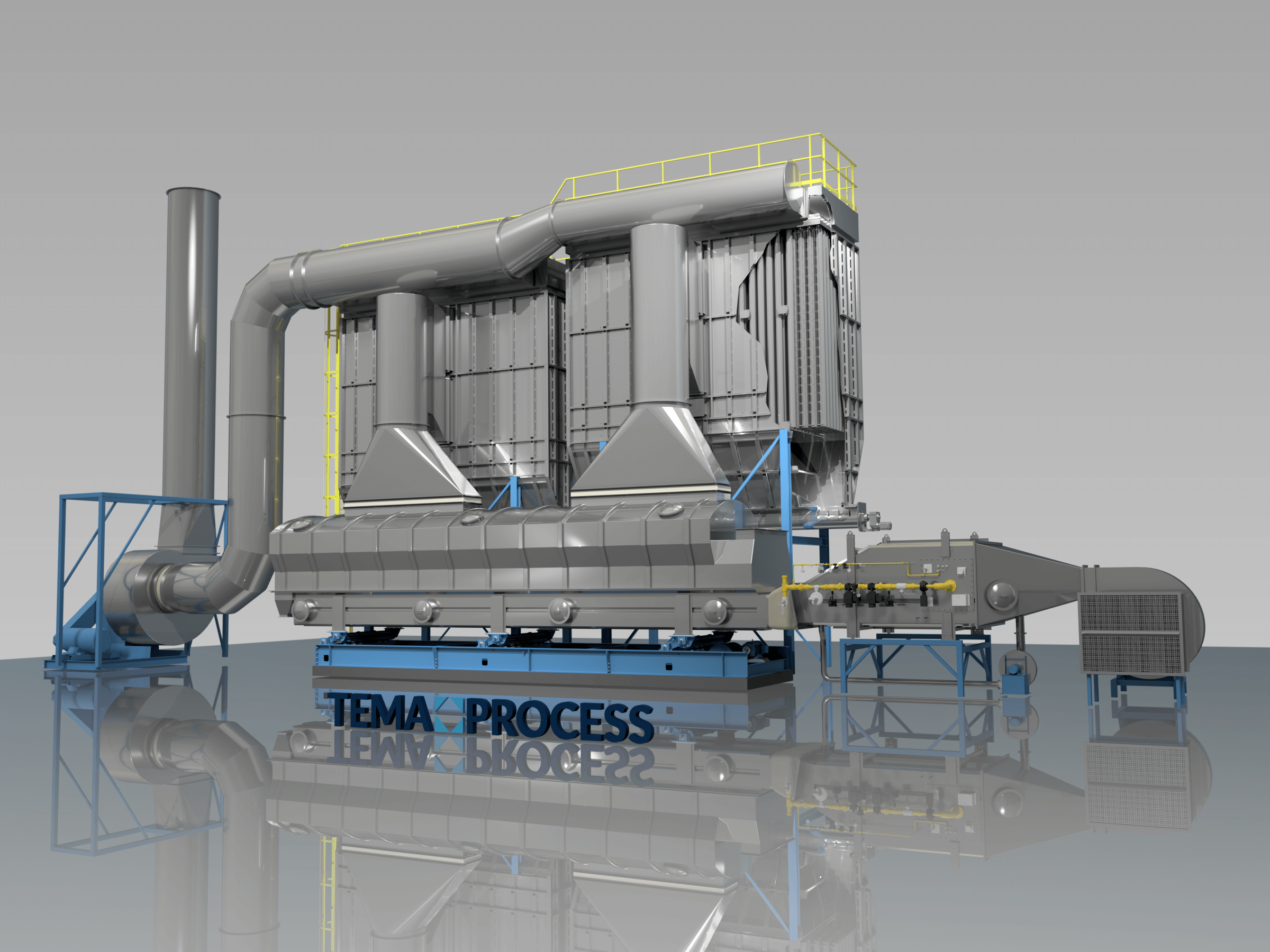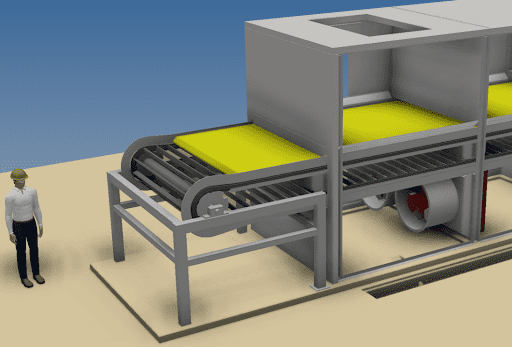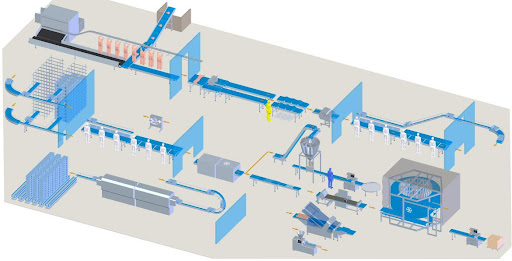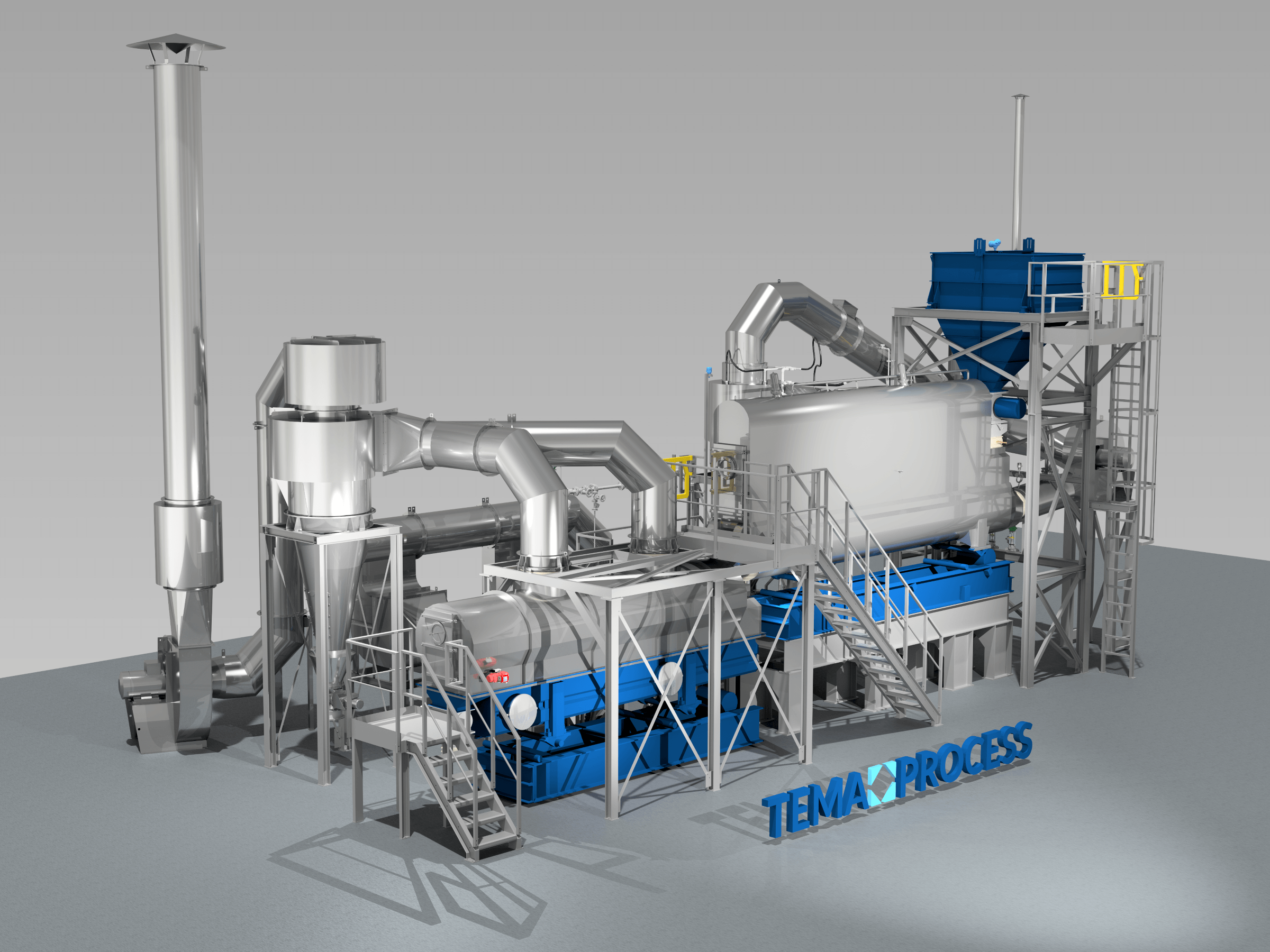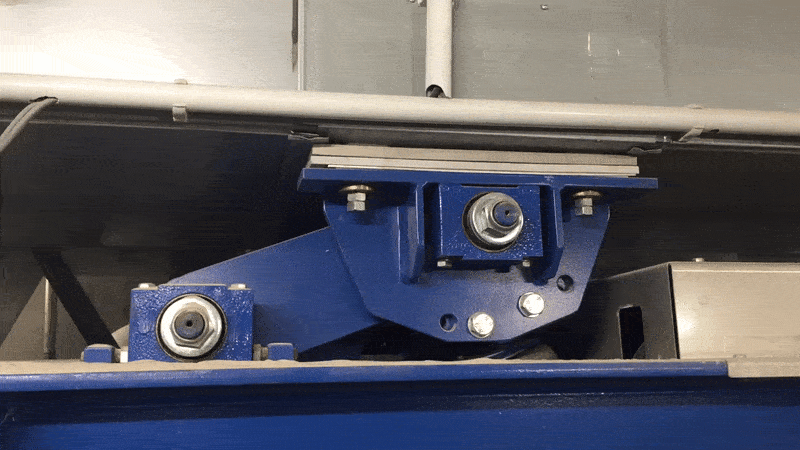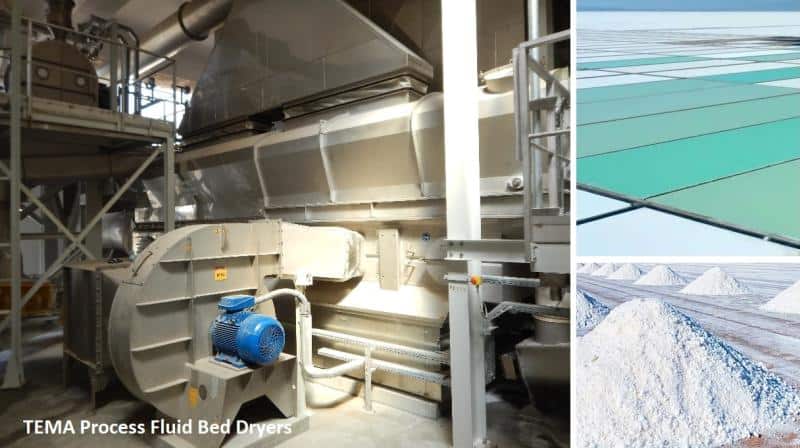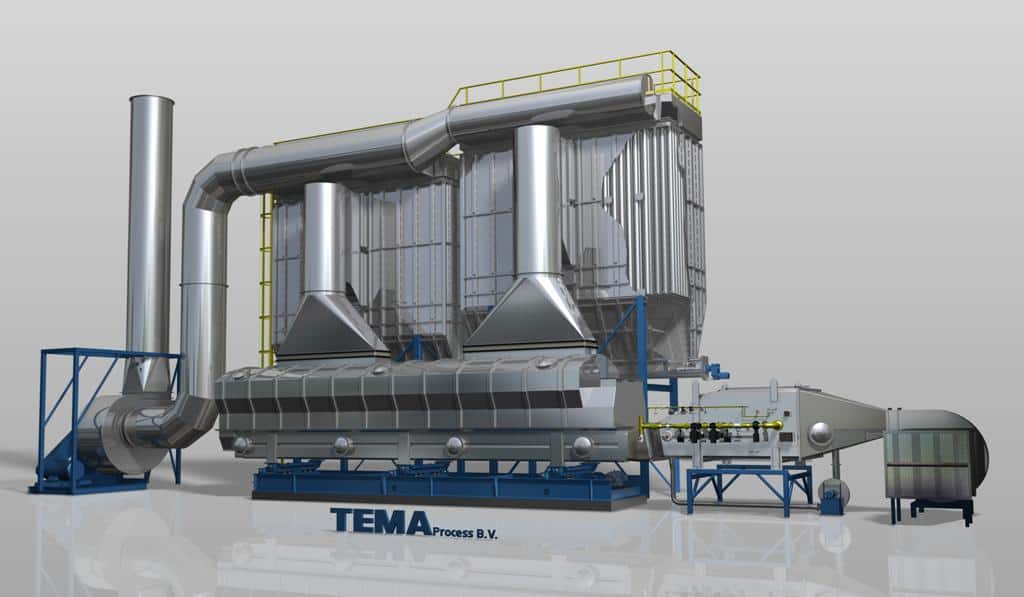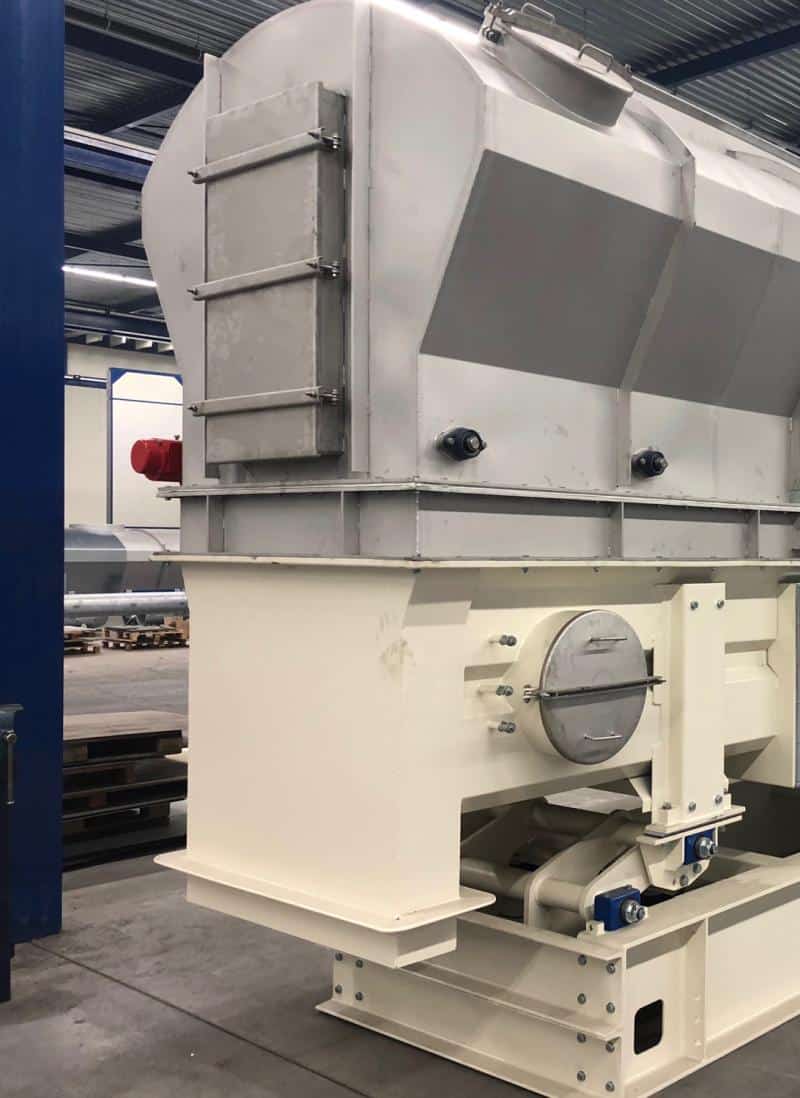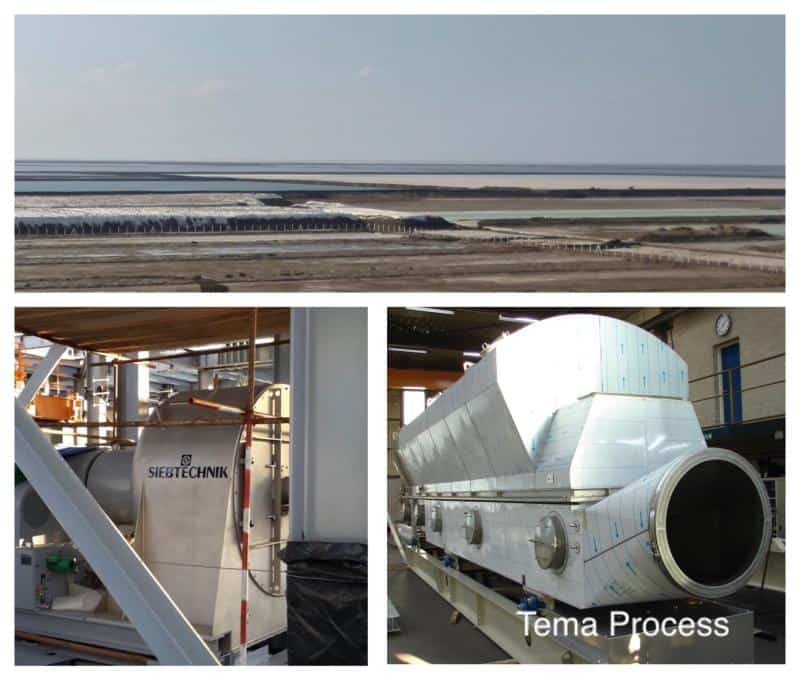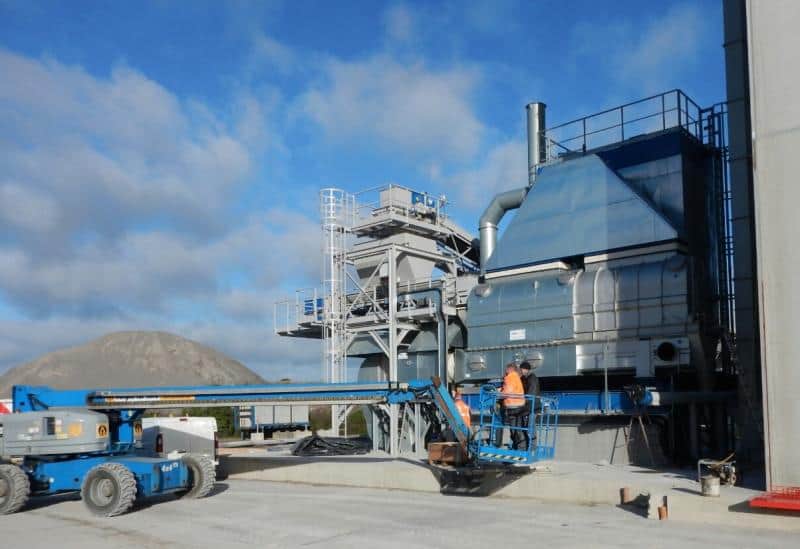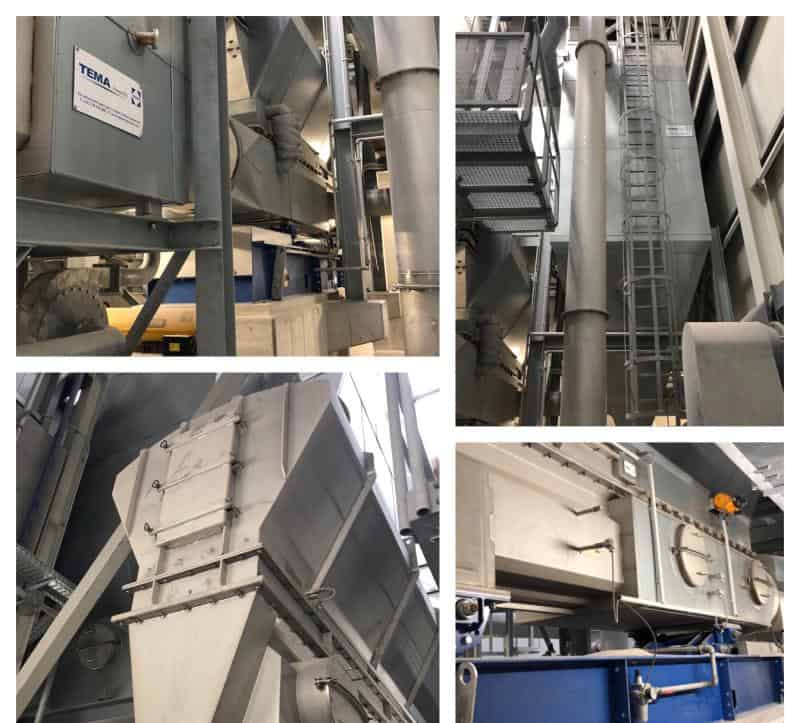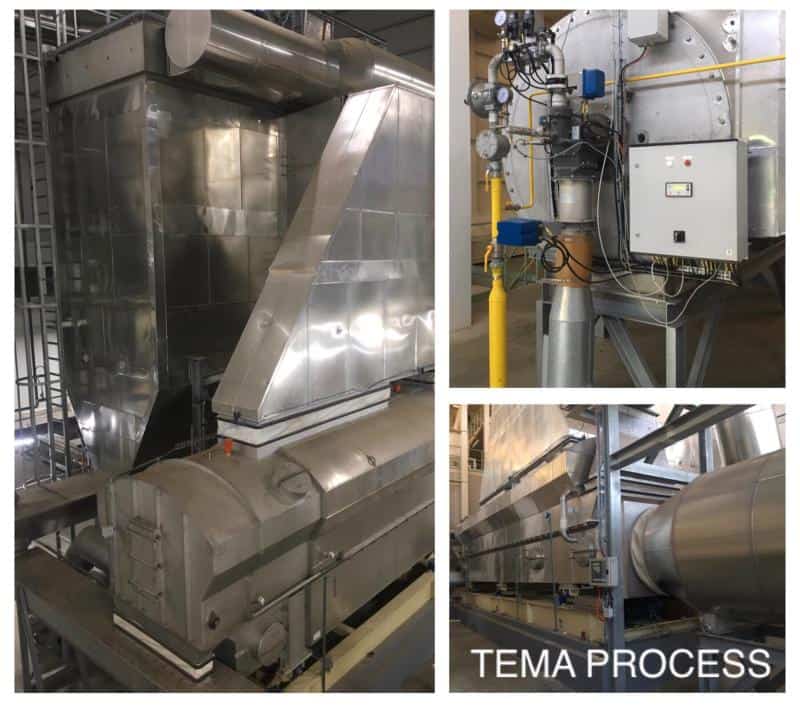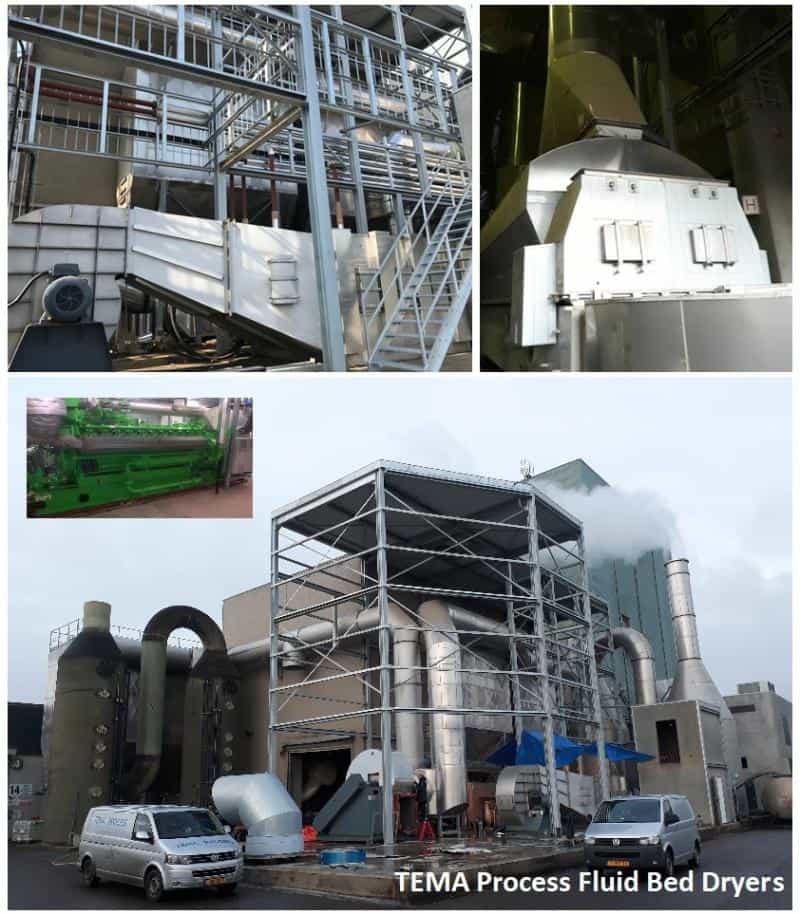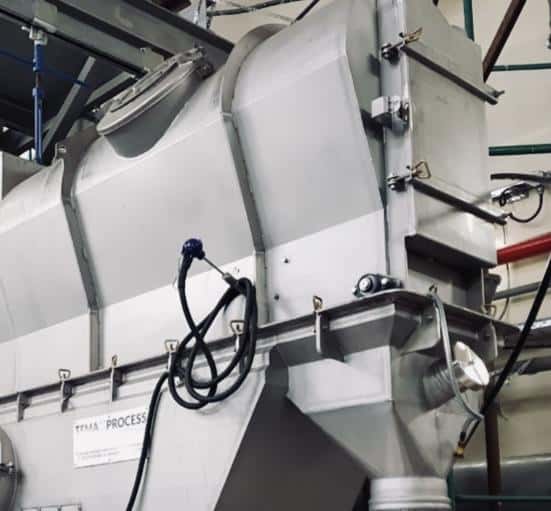TEMA Process shaking fluid bed dryers: gentle shaking motion advantages
The Tema fluid bed dryer uses a gentle shaking motion to support the fluidisation effect and ensures a controlled product transport. The low Frequency / High Amplitude moves the product forward in a step by step uniform manner referred to as plug flow. The g-force issue is eliminated allowing for smallest possible product deterioration, reduced foundation requirements and minimal noise output. Eliminating the [...]
Lithium hydroxide and lithium carbonate Fluid Bed Dryers
Lithium is mainly destined for the fast-growing lithium-ion battery market, which is driven by the increasing demand for electric vehicles and energy storage worldwide. The lithium containing brine is pumped into evaporation ponds, concentrated, and then purified on its way through the system. The brine is pumped through a cascade of ponds where impurities or by-products are crystallized and removed. Lithium hydroxide is a compound [...]
Our Fluid Beds systems are used in all kind of industries
Our Fluid Beds systems are used in all kind of industries where drying and cooling are elements of the production process. For example in the food industry: cereals, seeds, bread crumb, instant coffee, egg powder, nutraceuticals, sugar, dairy, starch, rice, salt, vitamins, xylitol, dextrose, aspartame, cocoa beans, sodium gluconate, maltodextrin, mannitol, pet food, spices, apple peel, orange and lemon, tomato pulp, seeds, cheese, coconut fibres, [...]
Fluidized bed coolers
Like a fluid bed dryer, the Fluid Bed Cooler also uses the principle of fluidisation for maximum exposure of surface for cooling action. Tema fluid bed coolers are designed to cool all kind of products at a variety of feed rates. The fluid bed coolers gently handle almost any product.
SOP, sulfate of potash (K2SO4) drying
SOP, sulfate of potash (K2SO4) is one of the most common potash fertilizers used by farmers to grow crops. There are operations that produce potash fertilizer by using salt mixtures from natural brines. This requires brine with high sulfate levels that are typically found in salt lakes. The steps in the processing of potash are usually separation, drying and compaction/granulation. In order to prevent and [...]
Fluid Bed dryer versus Rotary drum dryer
With a fluid bed dryer the drying air is more evenly distributed over the product. As a result, the drying air supply temperature and the product exit temperature can be maintained at constant, economical level, resulting in lower energy costs. A rotary drum dryer requires often a separate cooler. The cooler area represents about half the size of the fluid bed area and in the [...]
Fluid Bed Dryer/Cooler with Recirculation
Warm and relativ dry exhaust air from the cooling section is re-circulated and supplied to the gas burner, providing an additional energy savings of 10-15% and reducing the amount of air exhausted to atmosphere by up to 20-40%. The sand dryer control system is capable of adjusting the burner perfectly in real time to match whatever moisture content is in the sand. This results in [...]
Commissioning a chicken manure dryer
Chicken manure can be converted either into organic fertilizer or fuel. Why drying: To reduce manure weight: reducing storage and transport costs. Eliminate issues surrounding wet manure (odours /ammonia).
Reduce Risk with Low Temperature Fluid Bed Drying Systems
With the drying of biomass and organic fertilizers come the inherent risk of fires, explosions, VOC emissions (Volatile Organic Compounds) and fines. Biomass processing frequently involves material with high moisture content, a wide variety of particle sizes and strong odours. Energy-efficient fluid bed dryers facilitate high evaporation at low temperatures. For the heating of the thermal dryer , the waste heat is used from the [...]
Drying with Nitrogen instead of air
Drying with Nitrogen. Reducing the risk of explosion and reduction of emissions by using nitrogen as a safe and proven drying media. The system operates in a closed loop using an inert gas (nitrogen) in stead of air. The moisture is removed using a closed loop including a chilled water coil (condensation).
Tags
Interested?
Exploring options for your process? TEMA Process is here to assist. Whether you have specific questions or need guidance in selecting the right solution, our experts are just a call or email away. Leave your contact details, and one of our specialized team members will promptly get in touch. They’ll provide you with all the necessary information about our advanced solutions, tailored to meet your unique requirements. Let TEMA Process be your partner in achieving optimal product quality and safety

